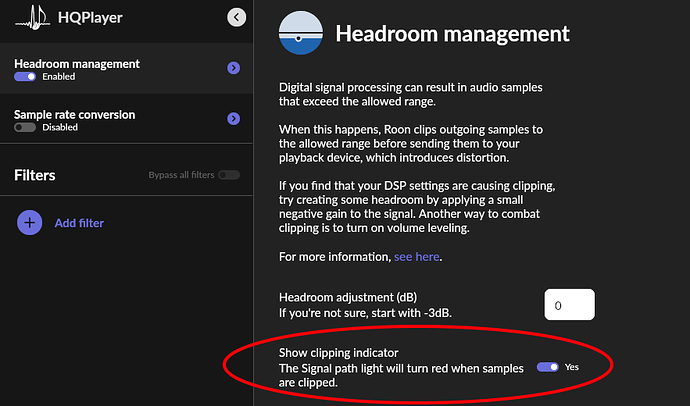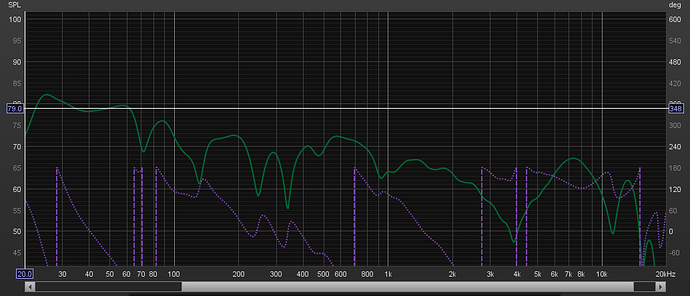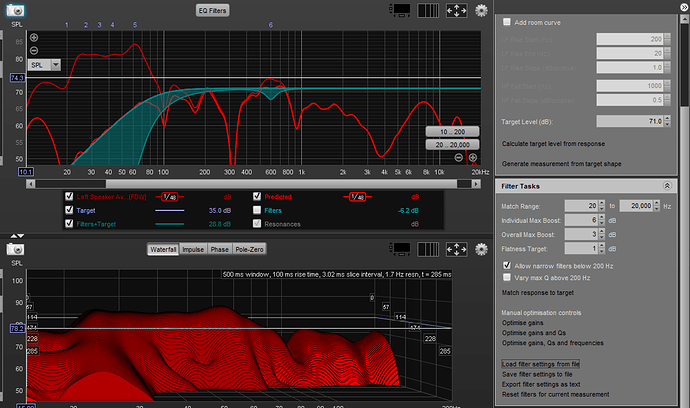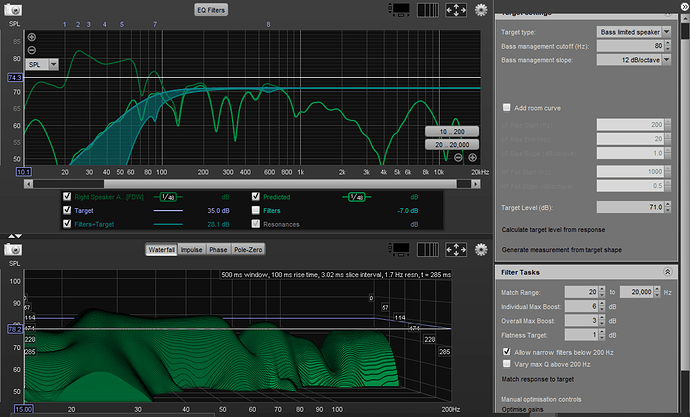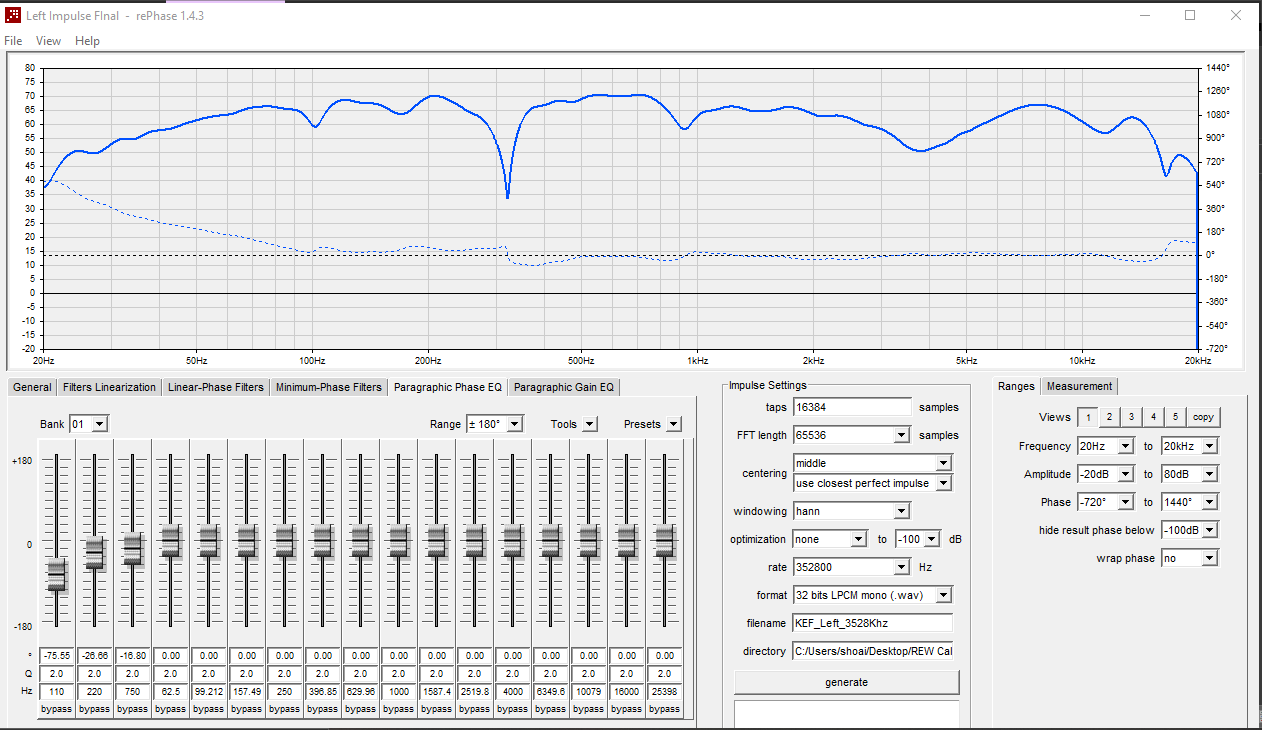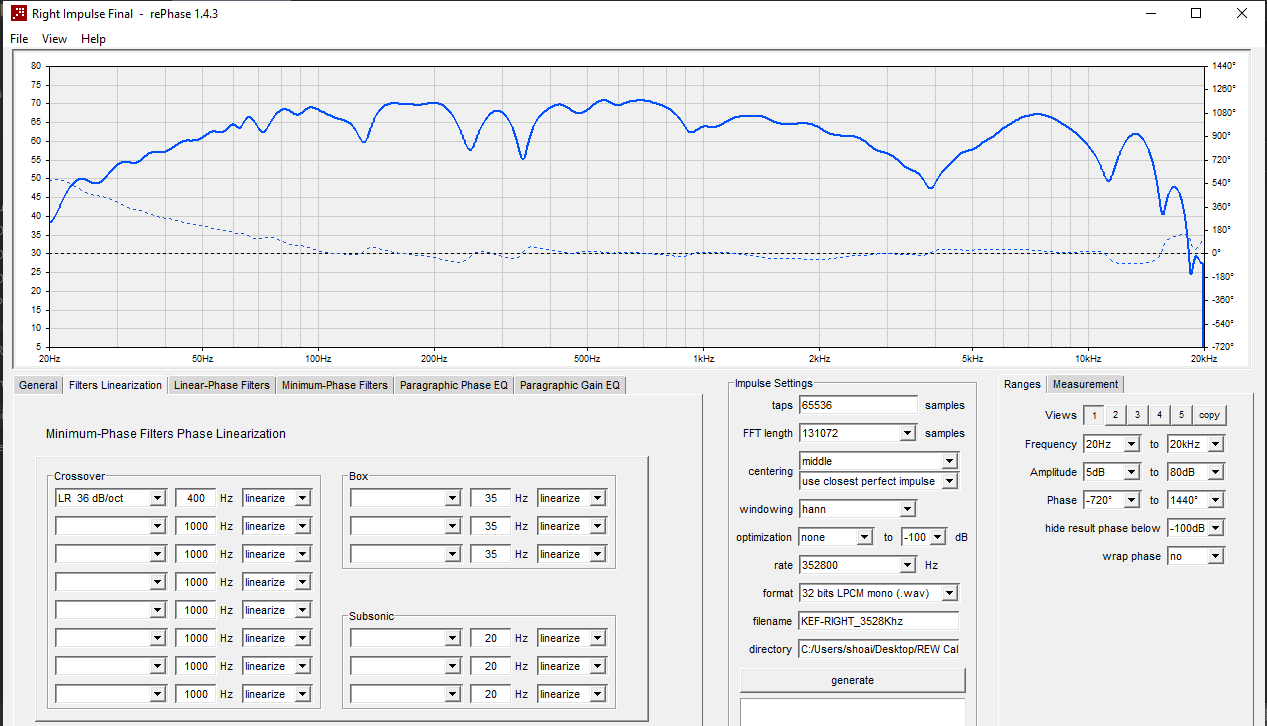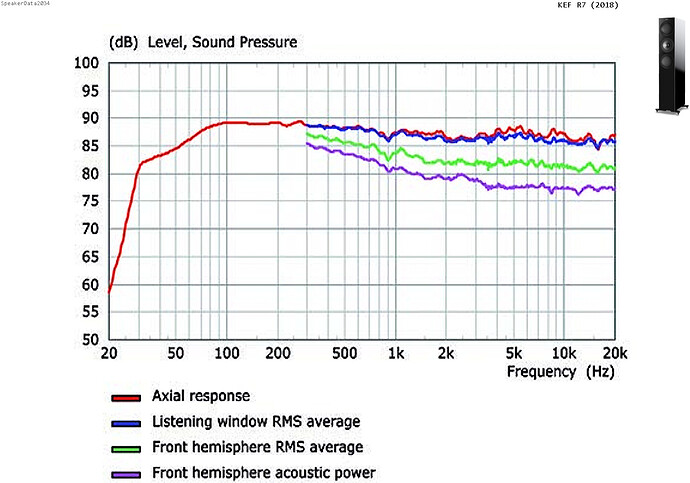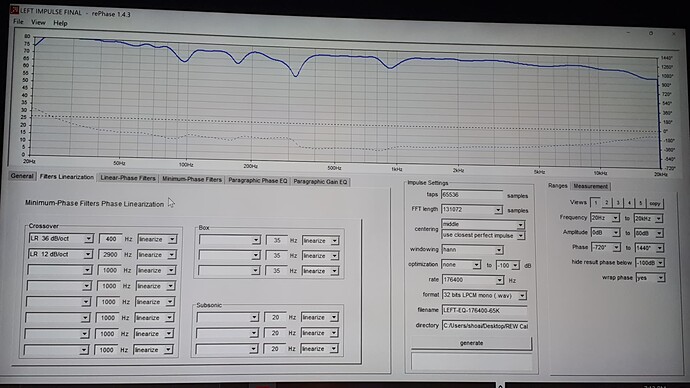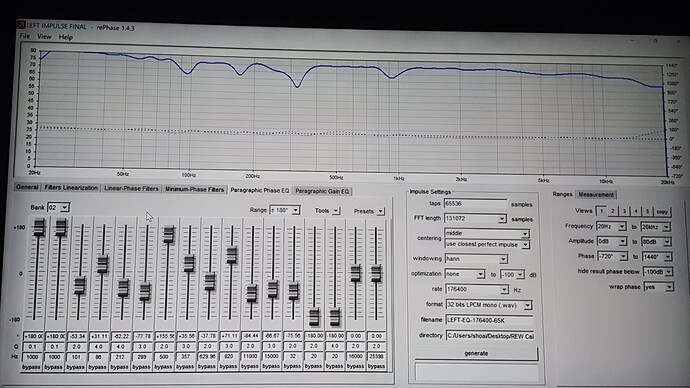Thank you for your reply
The boost is merely 1db…
Would it help if i applied that headroom option in roon?
Even a fraction of a dB will cause hard clipping…
Yes.
Thanks! I will give it a try
Hope i didnt damage anything
How would I know if any damage to the speakers or the amp has been done? I have ls50 and hegel h190
Most likely no damage at all, unless you had it cranked way up.
Worst case would usually be fried tweeters, you’d instantly recognize missing highs…
To check for more subtle damage, turn on the clipping indicator in headroom management.
Watch the clipping indicator while listening to music and if you hear scratchy distorted sound with no clipping indication, then most likely your tweeters are scratching their voice coils in the magnet gap due to prior overheating and subsequent deforming.
But as I said, pretty unlikely.
Happy listening!
Many thanks!
A good idea is to turn on clipping indicator in Roon, even if you don’t apply any headroom, then the blue star quality indicator will turn red when clipping occurs:
Did that yesterday and indeed there was clipping…
I could not hear any distortion when no there no clipping indication.
I applied -3db eventually and it works without clipping now
Thank you for creating this guide!
I’m confused about one thing though.
I’ve seen it recommended elsewhere to have the FDW disabled in REW when making corrections to the amplitude, but FDW enabled when exporting the measurement, to get the correct phase imported into Rephase.
This seems an important distinction to me, as my amplitude response has great variation in the high end with FDW on vs off, which would heavily influence the corrected response.
Am I missing something, or is there a specific reason the FDW is also left enabled when producing the amplitude corrections?
Gated response measurement is a tool to mimic anechoic chamber for the speaker in the room and FDW helps get rid of the comb filtering effect due to room reflections for higher frequencies. I agree that windowing will affect compromises on amplitude/frequency accuracy but 1. both phase and magnitude are derived from the same impulse response and will be similarly affected 2. correcting very high frequencies for LP doesn’t make much sense given the very short wavelength and location dependency of these frequencies.
Finally got around to do some sweep measurements and is testing this guide now. I did notice one strange thing: if I skip the step with smoothing out the phase of the filters, I get a more accurate phase at the final phase-fix step. My guess is that, for my room, changes to phase and frequency amplitude matches each other, at least to some extent.
Hi @OCA
What a nice REW guide this is. I followed it last night and have a few questions. Some background is that I am using 3 way KEF R7 speakers (crossovers at 400Hz & 2.9K) which don’t get toed in at all and I use a SVS SB-3000 subwoofer in a 2.1 channel system. When measuring, I kept my Sub ON at mid volume and 65Hz cutoff (in Sub) during both left and right channel measurements.
-
I noticed that at the EQ stage in REW, There was an option ‘Bass Management’ with a cutoff of 80 Hz…I didnt change that and as per your advice, put 20Hz to 20KHz range in Filter Task for correction. I noticed that the correction filter aligned to the Bass management curve essentially significantly cutting low frequencies altogether. After convolution, now my speakers (if the sub if off) hardly throw out any Bass. As a result I am having to increase the Sub volume much higher to get some low end Bass in my music. Is that the right way to do it?
-
For some reason I have a huge dip in both channels between 3-5K (like -10db) which isn’t being corrected by REW which is OK but just wanted to know what could cause this. When listening to music I don’t seem to miss any of the details as such.
-
In RePhase, when I put the REW average measurements for left/right speakers, there was huge phase issues…I had to go to on an use linearization for several frequencies and then also use some paragraphic EQ to adjust some more frequency phase points to make phase linear (as best I could). Hope this doesn’t affect the sound…as I made several corrections there?
Please see pics below:
Left Measurement
Right Measurement
Left EQ
Right EQ
Left Impulse - corrected
Right Impulse - corrected
Lastly, please let me know if you see any glaring errors in my method. I do notice huge dips in higher frequencies which isnt getting corrected, dont knoe if they should be.
Thanks for reading and responding to my questions in advance.
Hi m8,
Firstly looking at frequency response of R7s I would suggest you move the Xover to 80 Hz:
And then measure and equalize speakers and the sub separately in REW (speakers from 80Hz to 1KHz and the sub from 20Hz to 80 Hz). You can enter sub EQ settings to Roon directly in parametric equalizer. You don’t need a convolution file for that as you do not need to do any phase adjustments at these frequencies. For the speakers, once you upload the measurement and the EQ settings to Rephase first filter linearize at 900 and 2,900 (it seems you haven’t done the latter). You should try the best combination that fixes the slope of the phase curve among 12, 24 db etc for each combination. You should carefully select the range (-180 to 180 works best for paragraphic EQ’ing) and check it wrapped and unwrapped. Also remember 0, 360, 720, -360 are all equal phases. The sudden jumps from 0 to say 360 doesn’t matter. It’s a bit difficult to get used to but you will eventually figure it out.
There’s a phase difference between two speakers between 3000-5000 and this is causing the dip there (I can see a fast phase shift on the Left speaker there - although I can’t see where it ends up - but the right speaker doesn’t do that). The two speakers are cancelling out each other at those frequencies due to phase difference. This may well be because of the Xover phase shift at 2,900. It might even be a faulty xover cap (not very likely but possible). If the filter linearization tool doesn’t fix the phase difference between the two speakers then chances of fixing it manually are slim. Higher frequencies should generally not be touched. The phase shifts your EQ filters will cause should be the only ones you fix (I’d focus between 100Hz and 250Hz in your case) and don’t touch much else. The convolution files you created working in paralel with the parametric EQ in Roon should give you quite flat bass response, hence clearer mid to high frequencies.
Let me know how it goes. These speakers have an impressive frequency response.
Serkan
Thanks @OCA. Just have a few questions before I proceed…I am new to this and it takes me hours from start to finish.
Should plug off the speakers (manually via cable disconnection) while measuring sub or should I keep the speakers connected when measuring sub?
If I give the range for Filter Task from say 80 to 1Khz as you said, I am assuming the REW would not correct the Bass from speakers in the sub 80 region, just want to confirm that’s what we are targeting. In your original guide you corrected 45 to 20Khz for your speakers…is there a reason for me to stop at 1Khz now? I am assuming higher frequencies would do more harm than good.
What house curve should I use for Bass and Speaker measurements? Bass has it’s own house curve.
Do you mean taking out the Parametric EQ settings from REW EQ correction window right?
I believe the speakers crossover are 400Hz and 2.9Khz…did you notice the crossover at 900Hz in your research for the KEF R7s? When I tried to do 2.9Khz…the phase graph just went way below the target line all the way in higher frequencies. Should I linearize both 400Hz and 2.9Khz anyways and then use Paragraphic EQ to correct whatever dips those linearizations create around higher KHzs?
If I correct the phase and align it to the target curve in RePhase, shouldn’t this be fixed…this means that I must try to correct this even if it is more than the 250Hz limit you suggested.
They do and the UniQ driver from KEF is something one has to hear to appreciate. I am talking vocals and mid range equipment from dead center (image) and other music, Bass from all around you.
Appreciated.
I don’t know how your sub is connected to the speakers but in Rew if you use Java instead of Asio you can direct the measurement signal to whichever speaker you want. Or you could simply disconnect them and test separately. There are great Rew manuals around just Google it.
For speakers you don’t have to correct below 80 since these signals will go only to sub when Xover frequency is 80. My guide is for a two speaker system with no subs.
Yes you can key in to Roon PE all the Rew generic equalizer settings.
Over 250 Hz , you should only use filter linearization tool not the paragraphic equalizer
Thanks a lot @OCA
This was very helpful. Got a new Amplifier, the NAD C298 but as before, putting linearization tool on 400 Hz and 2.9Khz makes the phase shift way below the target line and I have no choice but to use Paragraphic EQ to align the phase curve to the horizontal line in RePhase (please see below). Maybe it’s just my setup. My Amp also doesn’t have a Cross over cutoff so all frequencies go to the sub and speakers…don’t know if in this case I should measure my sub separately, coz all frequencies go to both speakers and sub all the time.
With the correction done with sub running both with the R and L channels and with the phase corrections, I must say my system is much more listenable in my horrible basement of the house.
Anyways, will experiment more and report back when my SMSL SU-9 DAC and NAD C298 arrive. Thanks again!
Phase response after applying both Filter linearizations but before Paragraphic Phase EQ:
Phase Response after Paragraphic EQ applied to measured response with Filter Linearizations ON (same as above):
Thanks so much for these instructions.
One basic question I have is if the process flattens out the response curve, but then you have to adjust the EQ manually to your liking (or add a room curve), then what does it really accomplish? Especially since you can’t boost frequencies that fall below the line. Don’t you end up in the same place as if you used the Roon parametric EQ to begin with?
Thanks,
Luis
Dear Luis,
Main improvement in the sound is through flattening the boosted bass frequencies. Once you get rid of excessive bass, mid and high frequencies come into life. Boosting dips very often doesn’t work as these are reflected waves cancelling each other out and that wouldn’t disappear by EQ.
Also, if you think of the very short wavelengths of higher frequencies (think millimeters), equalizing these frequencies for a certain LP (listening point) doesn’t make much sense anyway. The response will significantly change with the moving of your head.
Hope this helps.
Serkan
Phew! convolution city
I’m really enjoying the read. Thank you for taking the time to share what you’ve learnt and helping others (well, me) fill in some of the blank areas, such as the modal decay stuff as to why typical flat responses sound thin and unenjoyable. Just want to say thanks, as through trial and error using amplitude changes only I have a config I never want to let go of, but now I feel like I may be able to improve on this armed with some more knowledge and newer better questions. 


Your welcome. Let me know if you have any questions.
S
